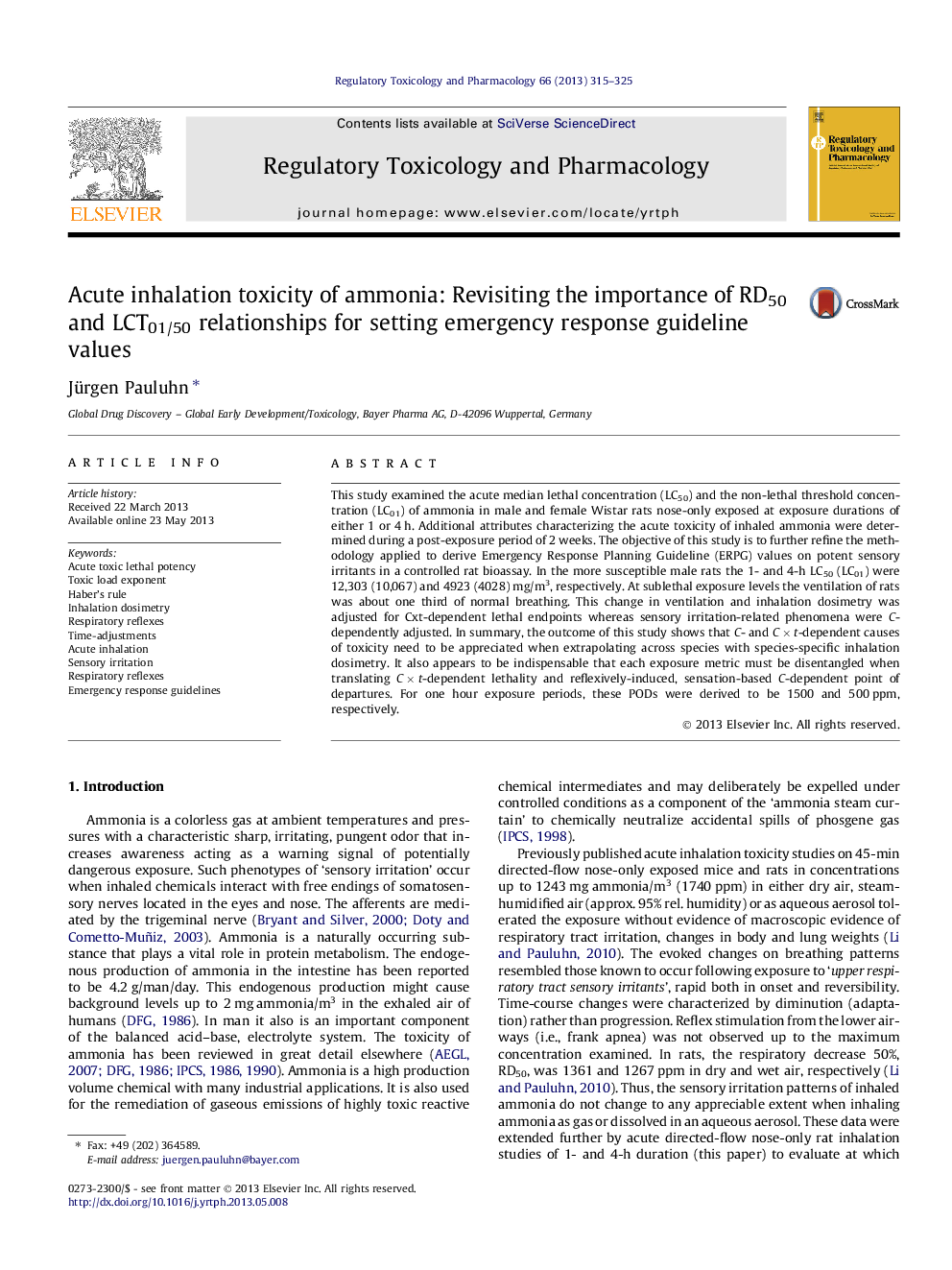| Article ID | Journal | Published Year | Pages | File Type |
|---|---|---|---|---|
| 5857658 | Regulatory Toxicology and Pharmacology | 2013 | 11 Pages |
Abstract
This study examined the acute median lethal concentration (LC50) and the non-lethal threshold concentration (LC01) of ammonia in male and female Wistar rats nose-only exposed at exposure durations of either 1 or 4Â h. Additional attributes characterizing the acute toxicity of inhaled ammonia were determined during a post-exposure period of 2Â weeks. The objective of this study is to further refine the methodology applied to derive Emergency Response Planning Guideline (ERPG) values on potent sensory irritants in a controlled rat bioassay. In the more susceptible male rats the 1- and 4-h LC50 (LC01) were 12,303 (10,067) and 4923 (4028)Â mg/m3, respectively. At sublethal exposure levels the ventilation of rats was about one third of normal breathing. This change in ventilation and inhalation dosimetry was adjusted for Cxt-dependent lethal endpoints whereas sensory irritation-related phenomena were C-dependently adjusted. In summary, the outcome of this study shows that C- and CÂ ÃÂ t-dependent causes of toxicity need to be appreciated when extrapolating across species with species-specific inhalation dosimetry. It also appears to be indispensable that each exposure metric must be disentangled when translating CÂ ÃÂ t-dependent lethality and reflexively-induced, sensation-based C-dependent point of departures. For one hour exposure periods, these PODs were derived to be 1500 and 500Â ppm, respectively.
Related Topics
Life Sciences
Environmental Science
Health, Toxicology and Mutagenesis
Authors
Jürgen Pauluhn,
